Apple variety Papirovka
Papirovka is a popular early summer apple tree variety that is very popular in breeding. Obtained as a result of natural natural pollination. According to the most common version, this variety comes from the Baltic States, where it was identified at the beginning of the 19th century. Since the middle of the same century, Papier has been cultivated already in Germany, Poland, the western part of Russia, as well as in Ukraine and Belarus. The Russian name of the variety "Papirovka" is probably associated with the Polish "Papierówka" (paper) and Ukrainian "Papir" (paper).
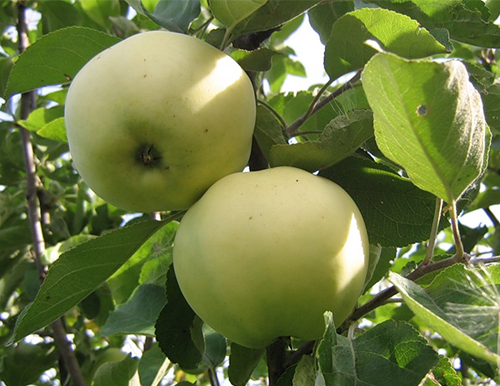
Other names for this variety are Pribaltiyskoe, Alabaster. However, most gardeners know Papirovka under the name White filling... And although many experts and scientists believe that Papirovka is the very White filling, the controversy on this issue has not subsided for almost a century. And today there is no consensus among scientists on this score. Such well-known domestic breeders as Michurin I.V., Kedrin S.P., Chernenko S.F., Rytov M.V. and Grebnitsky A.S. described in detail in their personal works the main differences between Papirovka and White filling. In general, these are two very close apple varieties with early summer fruit ripening. However, Papirovka's apples are larger in appearance and have a characteristic, pronounced "bump" on the peel. Also, in terms of taste and marketability, the fruits of Papirovka are valued higher than the fruits of the White filling. The indicators of susceptibility to scab in Papirovka are somewhat lower, but the indicators of winter hardiness in trees of the White filling are higher. There are differences in the leaves: in Papirovka, their edges are crenate, and in White filling, they are serrate.
In Russia, Papirovka has become the leading early summer variety in many regions. It is included in the State Register almost everywhere on the territory of our country, with the exception of only 3 regions - the Ural, East Siberian and Far Eastern regions. Due to the early ripening and low transportability of the fruits, Papirovka is cultivated mainly on private household plots and orchards (including collective gardens), which are located near cities and industrial centers.
Apple trees grow to medium size, although they grow rapidly at a young age. In young trees, the crown is rather wide, pyramidal, but as it grows, it gradually takes on a rounded shape. The color of the bark on the main branches and trunk is light, gray. Mostly the ringlets bear fruit.

Shoots are brownish-olive, medium thick, with strong pubescence. Lentils are elongated, white, rarely located. Vegetative buds are small, flat, grayish, slightly flattened. Leaves are medium-sized, gray-green in color, almost dull, strongly fleecy (especially on the inner side), elliptical or ovoid, with finely crested edges, without curvatures, strongly folded in the middle part of the shoot, the tips of the leaves are raised upward in the form of "spoons". The bases of the petioles can be pale or completely uncolored; the petioles themselves are long or medium in size. Under the conditions of the nursery, Papirovka can give tall one-year-olds with a small number of side shoots, the bark on them is light chestnut with a slight sheen.
The flowers are large, saucer-shaped, pink buds, the petals are predominantly white, but can be slightly pinkish, oblong, with slightly raised edges, closed or overlapping. The stigmas of the pistils are at the same level with the anthers or slightly higher.
In general, the fruits grow to medium size, with the largest apples found on young trees and the smallest on older apple trees. The average weight of an apple is 80 - 100 grams, but with proper care, young apple trees often produce fruits not only of medium size, but also larger ones, weighing up to 150 - 180 grams.The shape of the fruit is slightly flattened, often rounded-conical, less often flat-conical or higher, rounded-glassy. Usually Papirovka apples are of irregular shape, with well-visible ribbing (the ribs are rather wide). The largest fruits often take a triangular shape. Apples of this variety can be distinguished by a noticeable thin seam running vertically along the skin of the fruit (in the form of a sharp longitudinal fold). Sometimes there are several such seams at once on one apple. By color, the fruits of Papirovka are pale, greenish-yellow, without traces of blush. During the period of removable maturity, a thin, whitish bloom forms on the apples. The subcutaneous dots are quite large in size and are present in large numbers; they can be greenish or whitish in color. The peel on the fruit is very delicate, thin, dry, smooth. The stalks are of medium size or long. The funnel is of medium size in width and depth, slight rustiness is allowed. The saucer is small, narrow. The cup is closed. The sub-cup tube is short and conical in shape. The seed nest is large, bulbous. The seed chambers are large, they are open and half-open into the axial cavity. Seeds are irregular, angular, short, light brown in color.
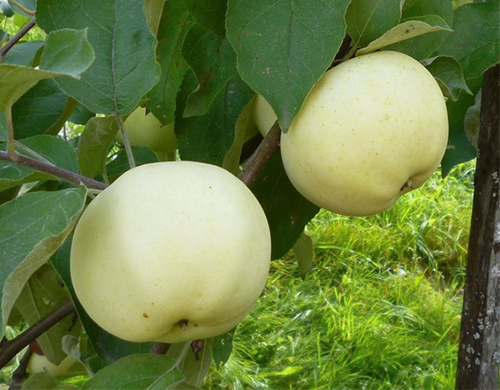
Despite the absence of a cover color, the fruits have an attractive appearance. The apples taste tender, very juicy, refreshing sweet and sour taste (with excess acid). The pulp with a weak aroma, white, tender, friable, coarse-grained structure. In overripe fruits, the pulp becomes mealy and slightly dry. Since Papirovka is an early apple tree, its fruits are used primarily fresh. But also juices (containing an increased dose of catechins), wine, jam, mashed potatoes and preserves are made from apples. In terms of chemical composition, the fruits contain a high amount of ascorbic acid (or vitamin C - 21.8 mg / 100 g), as well as P-active substances (209 mg / 100 g), sugar (9.0%), pectin substances (10 , 0%), titrated acids (0.97%).
The fruits ripen very early: in the regions located in central Russia, the period of removable maturity falls on the first decade of August (approximately from the 5th to the 12th), and in the southern regions - at the end of July (20th). After picking up, apples are subject to immediate sale and consumption. They are stored for a very short time, a maximum of 2 - 3 weeks in cool conditions (and even then, if you pluck them slightly unripe). It should also be borne in mind that picking and packing the fruits is required with the utmost care and care: the delicate skin and pulp can be easily damaged even with moderate pressure, impact and fall. At the same time, the spots sharply protruding against a light background darken very quickly, and at the same time the process of rotting apples starts. On the branches, the fruits hold quite firmly, but in dry years they can crumble heavily.
Papirovka is a highly early-growing variety. Trees on seed stock give a marketable crop in the 4th - 5th year after two-year planting. Apple trees of medium longevity can produce good yields for 45 to 55 years. In general, the yield indicator is average, due to the sharp frequency in fruiting. After bountiful harvests, trees may not bear fruit or produce very low yields. At a young age, apple trees produce a moderate harvest annually. According to the data obtained from the Kuibyshev Experimental Station, trees aged 9 - 12 years on average yield from 12 to 26 kg of apples, during the full fruiting period the average yield per tree is 60 - 70 kg, the maximum figure is 200 kg. In general, Papirovka yields higher than Cinnamon striped, but lower than Antonovka and aniseed.
The winter hardiness index in trees is relatively high. In a severe winter in 1955 - 1956, fruiting apple trees in the Oryol region slightly froze (on a 5-point scale, the damage was 1.2 points). Although the trees do well in normal winters, it is advisable to protect the trunks from rodents and hares. In general, Papirovka's winter hardiness is the same as that of Antonovka and Osenny striped. Scab affection of leaves and fruits is average.
Papirovka is an almost self-fertile variety. The best pollinators are Suislepskoe and Grushovka Moscow.
The main advantages of this variety are: early ripening, high early maturity, good apple taste.
Main disadvantages: low transportability of fruits, periodicity in fruiting, lack of bright colors in apples. Although the latter is very controversial, because many lovers of this variety are attracted by the delicate shade of its fruits.
On the basis of Papirovka, about 20 new apple varieties have been bred, which have become widespread in many regions of Russia. Among them: Lada, Krasnoyarskoe Sweet, Alenushkino, Mana (Krasnoyarsk Experimental Gardening Station), Lomonosov and Narodnoe (breeding VNIIS named after I.V. Michurin), Papirovka's Daughter (Kuibyshev Experimental Station), Iyulskoe Chernenko (breeding VNIIGiSPR), Slava Peremozhtsy (Mlievskaya Experimental Gardening Station) and Uralskiy Nalivnoe (South Uralskiy NIOPiK).
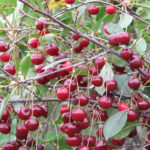
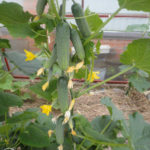

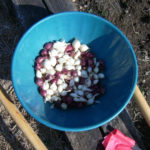





Krasnoyarsk. The tree is spreading, it froze only in the harsh winter of 2009 - 2010. Fruiting moderately, the apples are beautiful, have a pleasant taste, albeit sour, and smell like a green apple. Scab happens.
I add. Grew up huge, spreading. Huge harvests annually - 18 buckets happen. Delicious, straight to the Apple Savior. Little is stored.
The main advantage of this apple tree, because of which it is worth having in your garden, is the early ripening period. In fact, the papes are the first to ripen in our country. They are not stored for a long time, they quickly leave, they hardly go into processing. But at a time when the other apples are still green, the papier is already ripe. And we eat delicious, sweet and sour apples in large quantities. By the way, the papies are hypoallergenic, there is no red color in them, so you can safely give them to young children.
In especially fruitful years, I tried to process apples at least partially. I dried them, pickled whole apples, cooked jam from fruits with skins ... Although I am not too happy with the large harvests of this variety. In such fruitful years, apples become much smaller, a lot of them crumble, not fully ripe. As for me, less is more.
If there is not enough space in the garden and you want to plant more trees with late and medium ripening periods, but at the same time you want to feast on early apples, then there is one simple way. This is what my father once did. He planted two varieties of apple trees on one tree. At that time, one large branch of papaya was quite enough for our family.
I didn’t even suspect that Papirovka was “practically self-fertile variety”. For about 10 years she was the only one in my "estate" and, like a watch, a year later it was overgrown with apples. It was planted on the advice of my mother-in-law and turned out to be completely unsuitable for my family. Apples ripen in July, just at the time when children-athletes leave for training camps. The tree, covered with apples, looks very beautiful, almost white-skinned, with a longitudinal strip of apples are quite tasty, but you still have to manage to pick it in a suitable, “tasty” state. The apple is not stored at all, it becomes wadded, loose and in a productive year I start to panic, but what to do with them until everything is gone. The compotes from it are wonderful, but where to get so many cans and storage space? I will study winemaking!
The frosty winter of 2016-2017 destroyed all our apple trees, except for the wild one. For 20 years prior to frost trials, papieri gave consistently high yields. "Live" jam was cooked from apples (with the addition of a small amount of sugar), and a lot of drying was prepared. In winter, compotes made from dried apples, cooked almost without sugar, were a favorite drink. Drying is stored perfectly (in linen bags on the balcony). Orphaned without their apple trees ... Let's start all over again!
Papirovka, or White filling, is one of our favorite varieties for us. Despite the fact that apples are practically not stored, they make excellent compotes and jams. We also bake them. The only thing that I don’t understand is what our new seedling is missing (the parents grow well on the site) - we lean towards the soil, loam predominates on our site. Gardeners, can you tell me how to grow on such soil - can you give something to feed or will it grow very slowly? The seedling grows, then it loses branches, new ones in their place - but it cannot grow into a full-fledged tree ((
Oksana, most likely you have near groundwater. In this case, you need to plant the apple tree on a mound. It is created out of the blue from a pile of broken brick and slate, with a diameter under the crown, and fertile soil is poured.